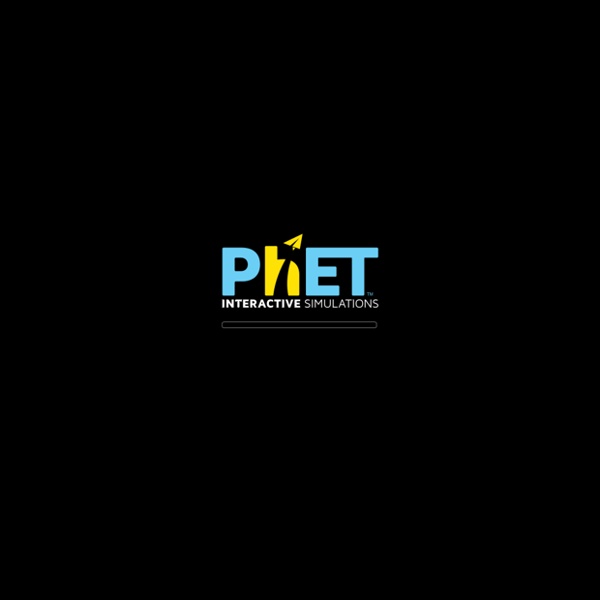



https://phet.colorado.edu/sims/html/molecule-shapes/latest/molecule-shapes_en.html
Related: Chap 5 : Géométrie des molécules et dissolution de solides ioniq • 1ère STL PCM • lycéeAnimation Tableau d'avancement Description : Le bilan de matière. Tableau d'évolution d'une réaction chimique. Au début de la réaction, au moment de l'introduction des composants dans le réacteur, par définition l'avancement est nul : x = 0. DéfinitionTableau d'avancement : tableau de 4 lignes : 1. l'équation équilibrée de la réaction ; 2. état initial (réactifs et produits, en moles) ; 3. état intermédiaire quelconque ; 4. état final Exemple : Dans cet exemple, le réactif limitant est le difluor car 9/3 < 7/2 : explication dans la vidéo.
Vidéo > Abracadascience : un verre cassé se répare tout seul Ce tour de magie impressionnant utilise en fait les propriétés de réfraction de la lumière. Si l’on place une tasse en verre dans un bac rempli d’eau, elle restera visible étant donné que l’air, l’eau et le tube sont transparents. Lorsque la lumière passe au travers de ces matériaux, elle change de vitesse et de direction, trahissant la présence de la tasse. On peut donc en déduire que le verre et l’eau on un indice de diffraction différent. Mais que se passe-t-il lorsque l’on remplace l’eau par un matériau dont l’indice de réfraction est identique à celui en verre, comme la glycérine par exemple ?
Le codage et l’algorithmique pour l’enseignement de la physique-chimie (2018-2019) - Physique-Chimie - Éduscol Introduction Les académies qui ont participé aux TraAM 2018-2019 ont axé leurs productions sur la thématique du codage et de l’algorithmique pour l’enseignement de la physique-chimie. Les six académies ayant contribué cette année à ce projet national ont élaboré différents types de scénarios pédagogiques, testés en classe, pour lesquels les objectifs de la pratique innovante, le contexte pédagogique, les outils ou fonctionnalités nécessaires ainsi que des exemples d’usages ont été définis. Les scénarios font également le bilan des apports et des freins rencontrés lors de la mise en œuvre en classe.
Cours seconde Selon le programme 2019 La progression ci-dessous est personnelle et n'est pas celle à faire à tout prix. Vous trouverez par chapitre le contenu du cours que je dicte la plupart du temps, des activités documentaires, des exercices (si ils sont différents de ceux du manuel), un ou deux TP. Manuel utilisé : Bordas. Avant de commencer : Fiche matériel et Compétences en physique chimie et utilisation de la calculatrice Chapitre 1 - Puissance et conversions Poussée d'Archimède - Flottabilité, Densité, Masse Sujets Flottabilité Densité Description Médiathèque - Les lois de Kepler Intégrer ce média sur votre site physique chimie - une boisson colorée mis à jour le 06/01/2013 un TP sur le dosage par étalonnage d'un colorant bleu dans une boisson pour sportif, support d'une évaluation par compétences. mots clés : couleur, concentration, Beer-Lambert, évaluation, compétences, dosage, titrage, absorbance, bleu brillant Cette activité met en œuvre le dosage par étalonnage d'un colorant bleu dans une boisson pour sportif. Activité expérimentale. Pré-requis :
Les éléments chimiques Pour commencer... Ce site rassemble les informations relatives aux 103 premiers éléments chimiques ainsi qu'à leur classification périodique, classification proposée par Dimitri I. Mendeleïev en 1869. La classification périodique est le moyen d'agencer et de classer les éléments chimiques dans un tableau à double entrée qui s'avère être d'une simplicité remarquable pour organiser l'ensemble de ces éléments en fonction de leur numéro atomique, de leurs propriétés physico-chimiques ainsi que de leur configuration électronique. Ce site est subdivisé en quatre sections distinctes Toutes les propriétés sont regroupées dans 6 catégories
Aide méthodologique en seconde Les objectifs : Ce dossier donne : - quelques conseils pratiques pour "apprendre sa leçon" et progresser - des modules d'activités pour développer des compétences - des fiches-méthodes thématiques sous forme audio ou visuelle et des exercices interactifs incluant ces ressources qui peuvent être faits en ligne ou téléchargés pour un usage hors ligne. Comme une langue bien vivante Avant d’aborder l’épreuve de philosophie demain, je vous propose aujourd’hui une petite séance sur la relativité. Avec la physique quantique, on ne sait jamais, cela pourrait vous inspirer pour des sujets sur le grand thème « La raison et le réel ». Continue reading « Bac 2019 : jour 9 – La relativité » → Aujourd’hui je vous propose une seule séance de révision, assez conséquente puisqu’on révisera à la fois diffraction & interférence et le traitement numérique de l’information. Continue reading « Bac 2019 : jour 8 – information numérique, interférence et diffraction » →
La Chimie au Lycée La matière L’énergie La chimie organique Acidité/Basicité La cinétique